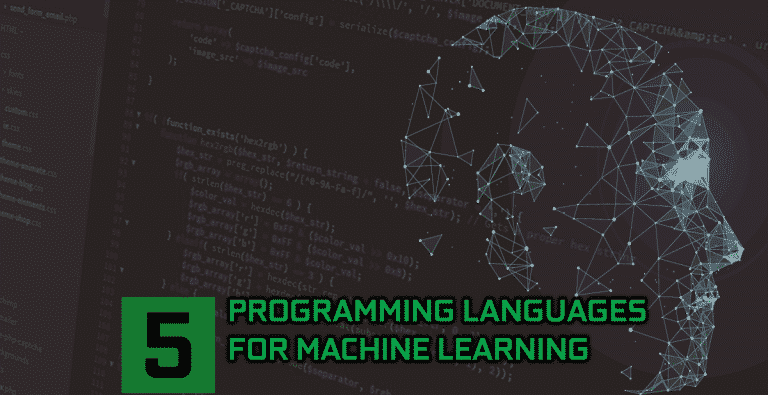The increasing demand for experts in machine learning during last few years has increased curiosity to know the programming languages which one can use in machine learning. But before discussing the best programming languages for machine learning you must have brief information about the concept of machine learning.
Contents
What is machine learning?
In the field of computer science, machine learning is a part of artificial intelligence that provides your computer an ability to learn to improve its performance with data, without being programmed exclusively. In today’s technical world machine learning is one of the fastest progressing concepts on which most of the tech giant companies are heavily investing to improve their merchandise.
In 1959, Arthur Samuel used the words machine learning for the first time to explore the construction of algorithms that can be used to predict on data by overcoming static programming instructions strictly to make predictions and decisions on the basis of data. Machine learning is used today in a number of computing works where the use of explicit programming and designing algorithms is not feasible like detection of a data breach by malicious insiders or network intruders etc.
Also Read: Difference between AI, Machine Learning, and Deep Learning
Best programming languages for machine learning
In order to understand and work on machine learning, you will have to learn few programming languages. Some of the best programming languages used for machine learning are briefly discussed hereunder for your guidance.
Python
Python has become a popular programming langue because it can be used flexibly for various purposes. For machine learning, it contains specific libraries like numpy and scipy which enable your computer to learn linear algebra and kernel methods for machine learning. While working on algorithms of machine learning then this language is greatly used as it has relatively easy syntax. It is the best programming language for beginners.
Also read: What applications do you develop with Python Programming?
R Programming
This programming language was developed in Bell Labs as a modern version of S language. In order to provide flexibility in producing statistical models, R language is combined with lexical scoping. Several GNU packages available in R language make it a really powerful language for machine learning.
One can use R language to create useful algorithms and easy statistical visualization of those algorithms by using R studio. The industry has recently recognized the importance of R language even if it is popular with academic researchers since long.
Also Read: Which one is preferable for Machine Learning? R or Python!
Lisp
Lisp is the best language for the programmers who want to learn about the history and facts about the craft and practices used in programming just for the sake of fun. Some consider it as a miraculous tool for programming whereas some are of the opinion that no language has ever been invented for machine learning like this.
In fact, artificial intelligence was also used before the invention of programming languages like Scala, Python and Haskell etc. lisp is mostly loved by hackers. It is used more by compilers than interpreters as supports efficient and fast coding. It collects garbage as it includes automatic memory manager.
Prolog
It is one of the oldest languages that were developed for programming Artificial Intelligence. It is another primary language like Lisp that is used for artificial intelligence of the computer. The developers working on flexible frameworks enjoy working with the mechanism of this language. This directive and rule-based language contain rules and facts to dictate the coding language of artificial intelligence. It supports some of the basic mechanisms like tree-based data structuring, automatic backtracking and pattern matching etc, essentially required for programming artificial intelligence.
While representing tree-based data structures this programming language has an inbuilt list to handle essential things. It can be used efficiently for prototyping artificial intelligence programs as fast as it releases modules frequently. It allows running the program simultaneously while creating a database.
JavaScript
Most of the web developers, new and seasoned, today use JavaScript. For a long time, JavaScript used to be limited to the only web development but now it’s everywhere. Tensorflow.js, an open source library for google’s framework for machine learning is built on the top of Javascript. Javascript falls into the category of Python and Java for its wide applications.
This is my list of top programming languages for practicing Machine Learning and artificial intelligence. If you think I’ve missed any important language that should be on the list, write in the comment section below.


